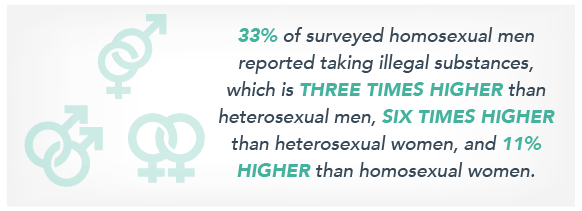
Some people mix Valium with alcohol to intensify the calming effects of each drug unaware of the dangers they present. Mixing alcohol with Valium can increase the chances of overdose, liver problems, cardiovascular problems, and memory problems.
Why Is My Loved One Abusing Alcohol And Valium?
Many people drink alcohol to help them relax or unwind, and mixing it with Valium can actually intensify those effects—in a negative way. That’s because alcohol is considered a depressant and so is Valium.
Valium is the most common brand name of diazepam, which belongs to a drug class called benzodiazepines. These depressant are most commonly used to treat anxiety, insomnia, panic disorders, and muscle spasms. When dosage is being supervised by a physician, Valium can be also be a safe way to manage some of the symptoms of alcohol withdrawal.

Alcohol and Valium reduce the activity in a person’s central nervous system, which is why when someone drinks they often feel drowsy, sleepy, or lightheaded. Mixing the two can be dangerous, because each drug, no matter how potent, is intensified by the other.
Not everyone mixes alcohol with Valium to intensify the effects of each drug—sometimes it happens by accident. If it is on purpose, it might be easier to understand why they did it, if you know more about their background. That’s because addiction can have genetic, psychological, physiological and social factors that contribute to each individual’s illness and symptoms.
The fact is, it isn’t always easy to tell if someone you love is abusing drugs or alcohol. They may get defensive when confronted, change the subject, or seem distant. Here are some of the other things to tell if a loved one is abusing drugs or alcohol, they might:
- spend a lot of time alone
- lose interest in their favorite things
- get messy—for instance, not bathe, change clothes, or brush their teeth
- be really tired and sad
- be very energetic, talk fast, or say things that don’t make sense
- be nervous or cranky (in a bad mood)
- quickly change between feeling bad and feeling good
- sleep at strange hours
- miss important appointments
- have problems at work
- eat a lot more or a lot less than usual
National Institute on Drug Abuse
Addiction is an illness characterized by a person’s inability to stop using drugs. That’s why some people are able leave substances alone, while others are not. A lot of people require an individualized treatment based on their needs, in order to stop using drugs.
Understanding An Addiction To Depressants
Addiction to benzodiazepines can result from past trauma, undertreated anxiety disorders, and also from excessive use of the drug. A lot of people start using depressants like Valium or alcohol to feel normal. But normal may be a term used for feeling relaxed, getting enough sleep, and so on. Using a drug to feel normal is a type of unhealthy coping, and it can be extremely dangerous. This type of coping has potential to lead to dependence, tolerance, lack of control, and co-occurring disorders.
As time goes on, a people might become unable to handle reality without a drug. They might take the drug so much, that they start building up a tolerance, which means that they need more of the drug than when they first started using it. After a person develops a tolerance to depressants, they become more likely to also develop a dependence.
When a lot of people become physically dependent upon drugs, they also begin having intense cravings, and may not be able to control of the amount they’re using, or when they’ll stop. Alcohol dependence is also referred to as alcoholism. Valium may have originally been used to treat a legitimate medical purpose, but when it’s abused, it can become a vice, and a person may not be able to find balance without it.
The same goes for alcohol—when a person drinks moderately, they may not have an issue with alcohol abuse or alcoholism, but as they continue binge drinking, or drinking too much, they may find that they’re unable to stop once they pick up the first drink.
What Happens When You Mix Valium With Alcohol?
An overdose is caused when a person takes too much of a drug and their body is unable to metabolize it fast enough. Mixing alcohol and Valium can increase the risk of overdose. It often leads to unintended, and unpredictable symptoms; an overdose can be fatal.
According to the National Institute on Alcohol Abuse and Alcoholism not only does mixing depressants increase the chance of overdose, it can:
- slow down heart rate
- slowed or difficulty breathing
- impaired motor control
- unusual behavior
- memory problems
As previously mentioned, some people mix Valium with alcohol without understanding the danger. Many will develop an addiction to both of these drugs. This is known as polysubstance addiction or polysubstance use disorder.
Polysubstance refers more than one drug, and is outlined by the Australian Government Department of Health as when “people who are trying to cut down their use of one drug find that they start to use more of another drug to help manage withdrawal symptoms. It’s important to be careful in these situations because the person might find they develop a problem with two drugs rather than one.”

Mixing alcohol with Valium also damages the liver, which is essentially the body’s filter. Liver damage can end with other, sometimes fatal, conditions such as cirrhosis, or hepatitis. When Valium is being prescribed to treat symptoms of alcohol withdrawal, be sure that your loved one is leaving enough time in between the two substances to avoid danger.
How Long After Taking Valium Is It Safe To Drink Alcohol?
The half-life of Valium is fairly long, and can be anywhere from 20 to 80 hours. Let’s say someone is fairly healthy in most respects, and the half-life of Valium in their body is 24 hours. This means that after 24 hours, half of the drug is still in their system. After 24 more hours, there will be a quarter of the drug left in their system. And so on…
On average, for a healthy person, there will have been up to 150 hours passed by the time Valium is completely out of their system—that’s just over six days. Mixing alcohol into that time frame can be extremely dangerous. A lot of people don’t realize this, but alcohol with Valium in the system can be fatal.
It’s different taking Valium after alcohol, because alcohol is out of the system at a relatively fast rate. Generally, it takes your body about 1 hour to process 1 standard alcoholic drink. For someone with a slower metabolism, alcohol might be in their system longer. The previously mentioned time frame of alcohol metabolism can also vary based on a person’s weight, age, amount consumed, and height.
Keep in mind that no matter what, it isn’t safe to mix substances, and if you’re having a hard time stopping, there’s help. In fact, there are people who make it their life’s work to help others recover from addiction. If you’re unsure about what to do to stop abusing drugs or alcohol, sometimes the safest thing to do is ask.
What To Do If You Can’t Stop Using Drugs
In 2009, 23.5 million persons aged 12 or older needed treatment for an illicit drug or alcohol abuse problem. Of these, only 2.6 million received it at a specialty facility.
It’s true, not everybody gets help for an addiction, even though it might be risky to continue living with one. It’s especially hard to lose a loved one to drugs or alcohol, if you didn’t know that they had an issue in the first place. If you think someone you love is suffering from a drug addiction, don’t give up hope, and don’t ignore the problem.
“About 570,000 people die annually in the U.S. due to drug use,” (NIDA for Teens). The fact is that there are too many good people lost to drug addiction, and the United States is currently in the middle of a drug epidemic.

One of the best ways to ensure your safety is to take an active approach towards recovery. There are a lot of different addiction treatments that help people overcome the mental and physical addictions caused by Valium and alcohol.
The first part of treatment is known as detoxification. This is essentially the removal of unwanted chemicals and substances, as well as management of withdrawal symptoms. The withdrawal symptoms of alcohol and benzodiazepines can be painful and uncomfortable—they also have potential to increase the chance of relapse. Once a medical detox is complete, the mental healing can begin.
Oftentimes, a mental addiction can be treated at an inpatient or outpatient rehab, with one of the following behavioral therapies:
- Medication Assisted Therapy
- Cognitive Behavioral Therapy
- Dialectical Behavior Therapy
- Mindfulness and Stress Management
- Motivational Interviewing
- Group and Individual Therapy
Find The Best Treatment To Help You Stop Using Drugs
If you’re ready to overcome addiction, but don’t know where to begin, contact a treatment specialist at DrugRehab.org. We want to help you or your loved one find treatment, figure out how to fund it, and where to go for it. Call today to learn more.
For More Information Related to “The Dangers of Mixing Alcohol with Valium (Diazepam)” Be Sure To Check Out These Additional Resources From DrugRehab.org:
- The Dangers Of Mixing Alcohol With Hydrocodone (Vicodin)
- The Dangers Of Mixing Alcohol With Crack Cocaine
- The Dangers of Alcohol Withdrawal
- How Common is Alcohol Abuse?
- Signs of Librium Abuse
Sources
Australian Government Department of Health – Polydrug Use
National Institute on Alcohol Abuse and Alcoholism – Mixing Alcohol with Medicines
National Institute on Drug Abuse – Signs of Drug Use and Addiction
Treatment Statistics
NIDA for Teens – Drug Facts Chat Day: Drug Use


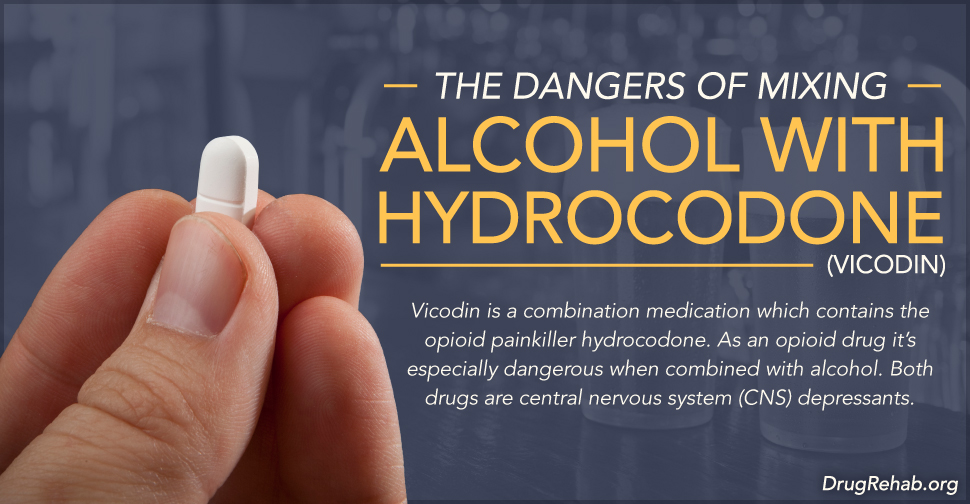


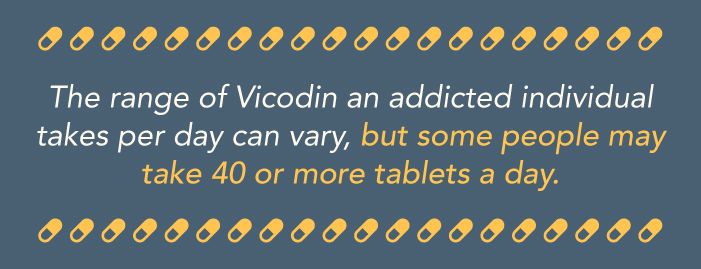

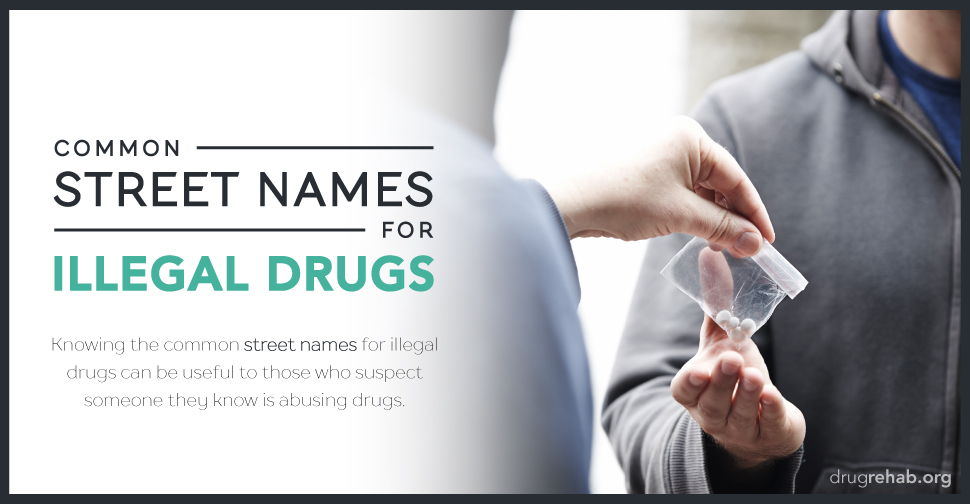



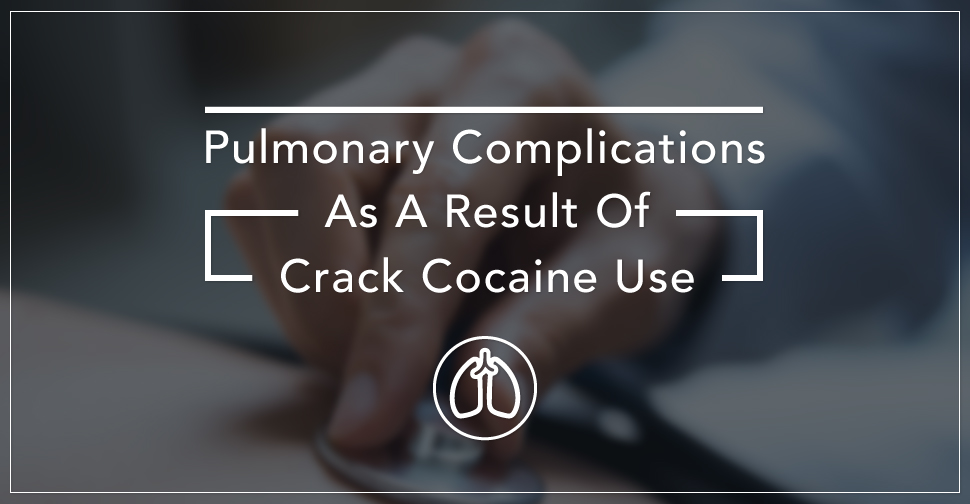

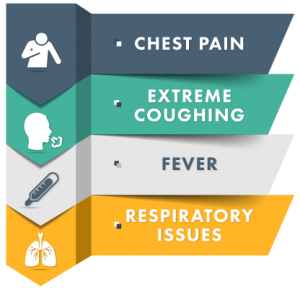 When a person smokes crack, their lungs may become irritated and inflamed. Continuing this pattern of use and abuse may cause permanent damage to the lungs. Further, the chemicals taken directly into the lungs can be harmful, some of which are additives or contaminants. Additives are the substances added to crack cocaine, often to increase the drug’s volume and profits, or to aid in changing the chemical composition.
When a person smokes crack, their lungs may become irritated and inflamed. Continuing this pattern of use and abuse may cause permanent damage to the lungs. Further, the chemicals taken directly into the lungs can be harmful, some of which are additives or contaminants. Additives are the substances added to crack cocaine, often to increase the drug’s volume and profits, or to aid in changing the chemical composition.
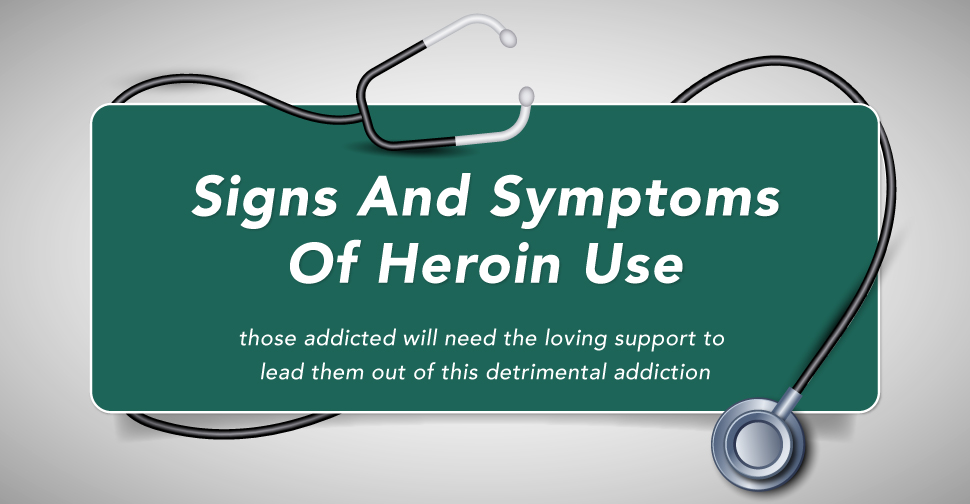
 Since heroin is usually smoked, snorted, or injected, you may find evidence and remains of the drugs or paraphernalia. Many people may keep their supplies assembled in a kit, in a small bag or case, which may be hidden. Examples of heroin paraphernalia may include:
Since heroin is usually smoked, snorted, or injected, you may find evidence and remains of the drugs or paraphernalia. Many people may keep their supplies assembled in a kit, in a small bag or case, which may be hidden. Examples of heroin paraphernalia may include: Injection site marks, including scars or scabs
Injection site marks, including scars or scabs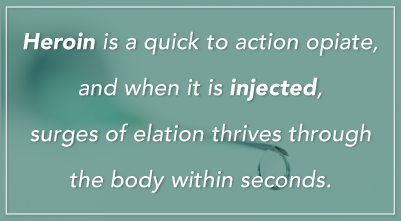 Overdose can happen at any point. When a heroin overdose happens, it will cause slow or shallow breathing, blue lips and fingernails, low blood pressure and pulse, clammy skin, delirium, convulsions, and coma. If you suspect an overdose, seek help immediately, as overdose can be fatal.
Overdose can happen at any point. When a heroin overdose happens, it will cause slow or shallow breathing, blue lips and fingernails, low blood pressure and pulse, clammy skin, delirium, convulsions, and coma. If you suspect an overdose, seek help immediately, as overdose can be fatal.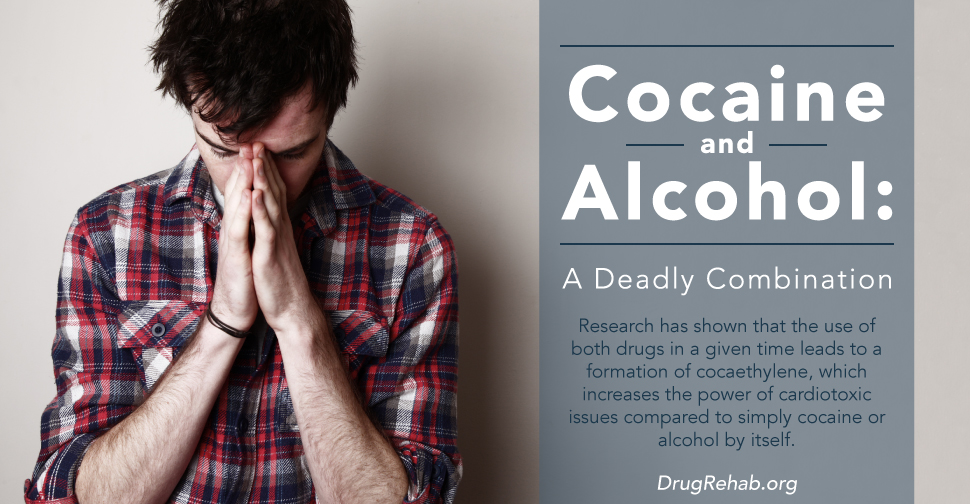


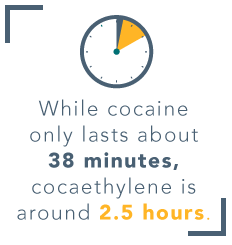 Cocaethylene creates a greater state of euphoria. It works similar to cocaine, creating even more intense feelings of pleasure, due to its increased ability as a reuptake inhibitor of dopamine. In addition, cocaine only has a half-life of 38 minutes, whereas cocaethylene has a half-life that is nearly four times that—at 2.5 hours. This is why individuals that choose to mix cocaine and alcohol experience the euphoria for longer periods of time.
Cocaethylene creates a greater state of euphoria. It works similar to cocaine, creating even more intense feelings of pleasure, due to its increased ability as a reuptake inhibitor of dopamine. In addition, cocaine only has a half-life of 38 minutes, whereas cocaethylene has a half-life that is nearly four times that—at 2.5 hours. This is why individuals that choose to mix cocaine and alcohol experience the euphoria for longer periods of time.
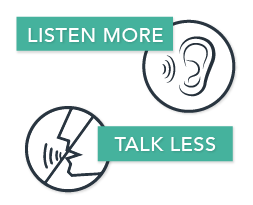 In example, the prefrontal cortex, an area that is responsible for controlling a person’s ability to thoroughly reason and control impulses,
In example, the prefrontal cortex, an area that is responsible for controlling a person’s ability to thoroughly reason and control impulses, 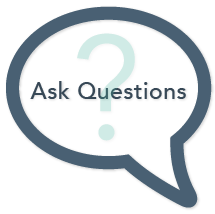 Listen carefully, remember what you are hearing, and strive to not react too strongly or become judgmental. Becoming overly emotional, angry, or blameful can cause your teen to end the conversation before it’s even really started, taking away what could be a critical opportunity for prevention, or even
Listen carefully, remember what you are hearing, and strive to not react too strongly or become judgmental. Becoming overly emotional, angry, or blameful can cause your teen to end the conversation before it’s even really started, taking away what could be a critical opportunity for prevention, or even 
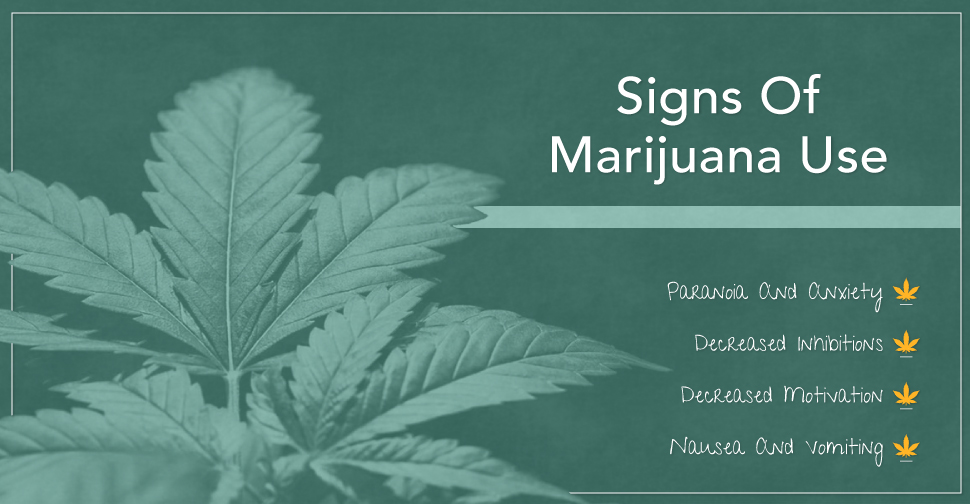
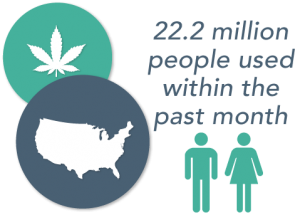

 Any time a person uses a drug, there will be some change within their physiology, and in addition, we often see side effects overtly present in their physical, mental, and emotional states. Marijuana is no different. Despite the fact that some people may think this is a harmless drug, it is not. In order to fully understand this and offer a person the help they need, we must be aware of the side effects and symptoms of this drug use, as well as the risks that they impart.
Any time a person uses a drug, there will be some change within their physiology, and in addition, we often see side effects overtly present in their physical, mental, and emotional states. Marijuana is no different. Despite the fact that some people may think this is a harmless drug, it is not. In order to fully understand this and offer a person the help they need, we must be aware of the side effects and symptoms of this drug use, as well as the risks that they impart.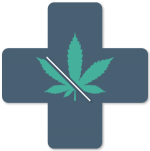 Like many drugs, marijuana has both short- and long-term effects, some of which we are just beginning to understand. Research is quickening on the subject, and the detriment of this drug is becoming more evident.
Like many drugs, marijuana has both short- and long-term effects, some of which we are just beginning to understand. Research is quickening on the subject, and the detriment of this drug is becoming more evident.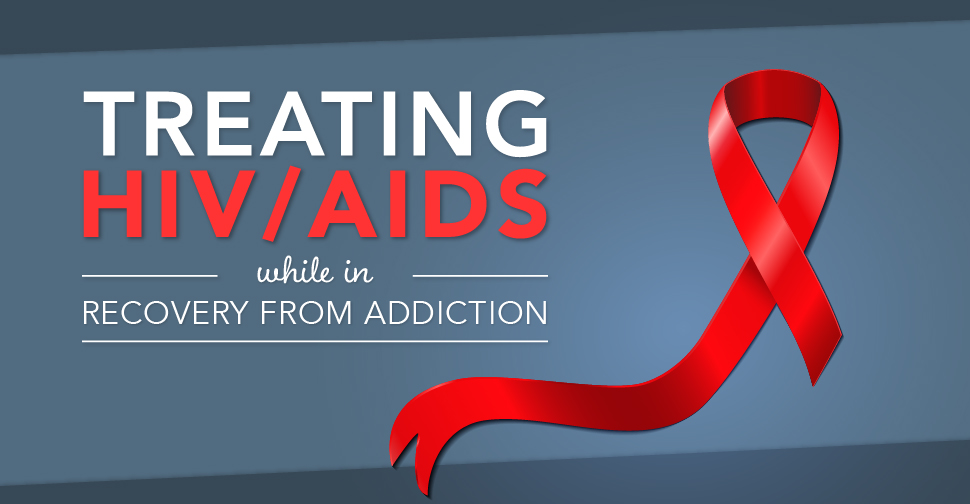
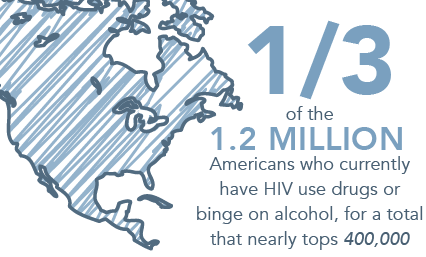
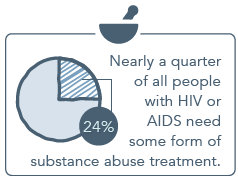 Treating HIV or AIDS and drug addiction at the same time is often complicated by a variety of concerns. Beyond the health problems that both cause (such as low energy, malnutrition, and susceptibility to outside diseases), lies the fact that many HIV/AIDS medications may actually cause multiple side effects that makes drug addiction more difficult to physically handle.
Treating HIV or AIDS and drug addiction at the same time is often complicated by a variety of concerns. Beyond the health problems that both cause (such as low energy, malnutrition, and susceptibility to outside diseases), lies the fact that many HIV/AIDS medications may actually cause multiple side effects that makes drug addiction more difficult to physically handle.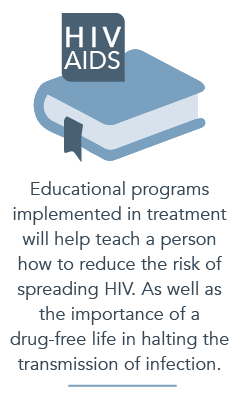 for facing current or future relationships and to decrease their chance of transmitting HIV.
for facing current or future relationships and to decrease their chance of transmitting HIV.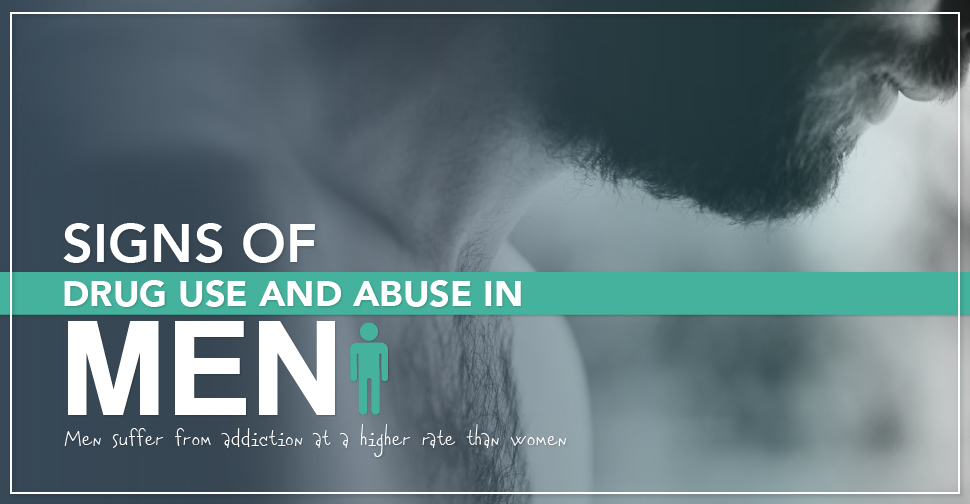
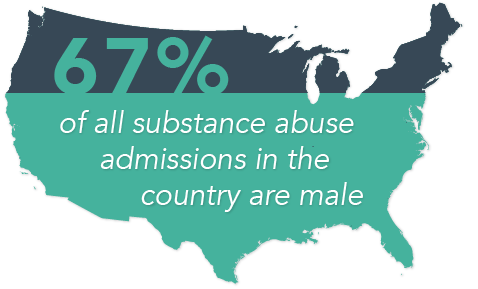
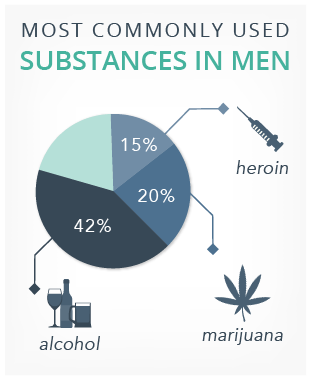 Another possible influence on higher rates of addiction in men is the elevated rate of use common in homosexual men. A government drug survey found that 33 percent of surveyed homosexual men reported taking illegal substances, which is three times higher than heterosexual men, six times higher than heterosexual women, and 11 percent higher than heterosexual women. Therapist David Smallwood, an LGBT addiction specialist, believes that this high rate of addiction use is caused by trauma in childhood: “[Drug use] is a way of medicating that stress,” he said.
Another possible influence on higher rates of addiction in men is the elevated rate of use common in homosexual men. A government drug survey found that 33 percent of surveyed homosexual men reported taking illegal substances, which is three times higher than heterosexual men, six times higher than heterosexual women, and 11 percent higher than heterosexual women. Therapist David Smallwood, an LGBT addiction specialist, believes that this high rate of addiction use is caused by trauma in childhood: “[Drug use] is a way of medicating that stress,” he said.


